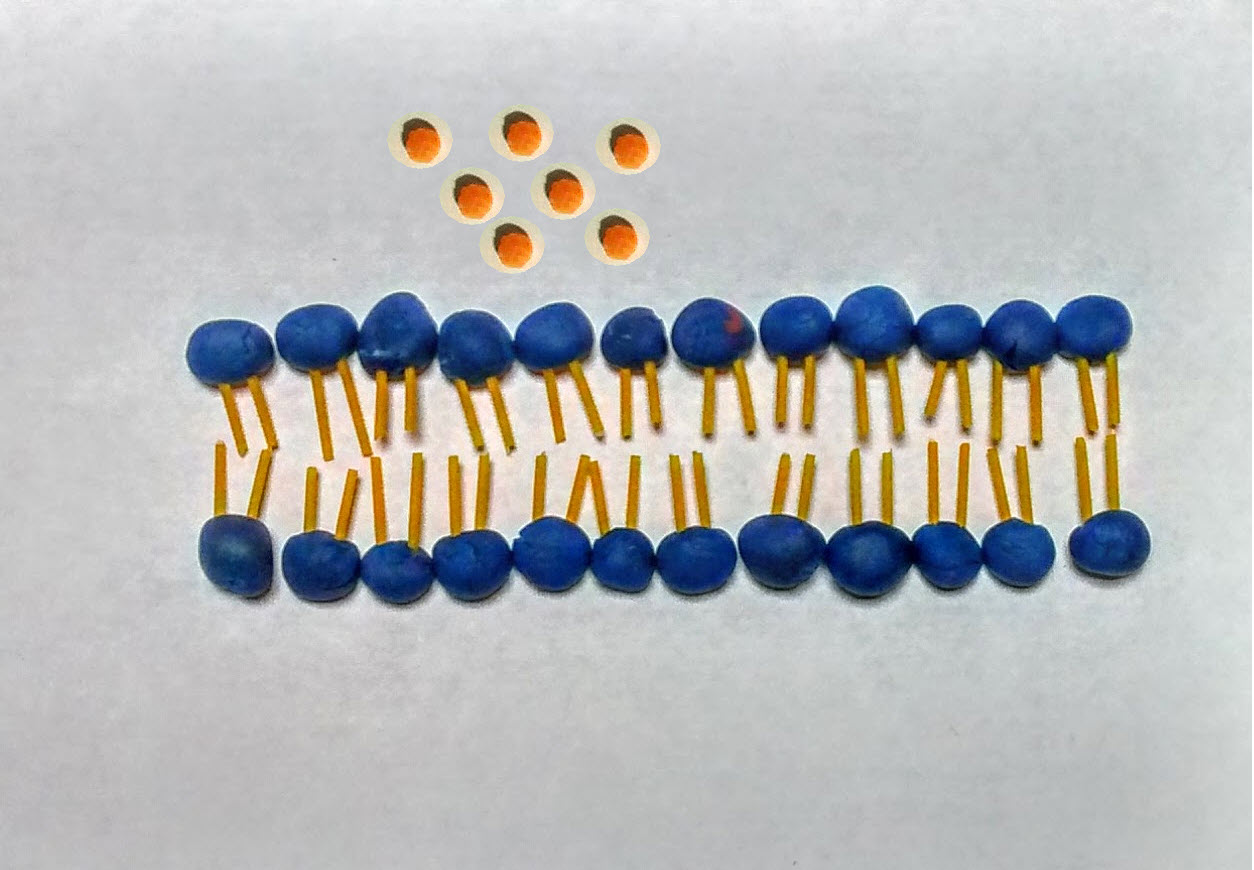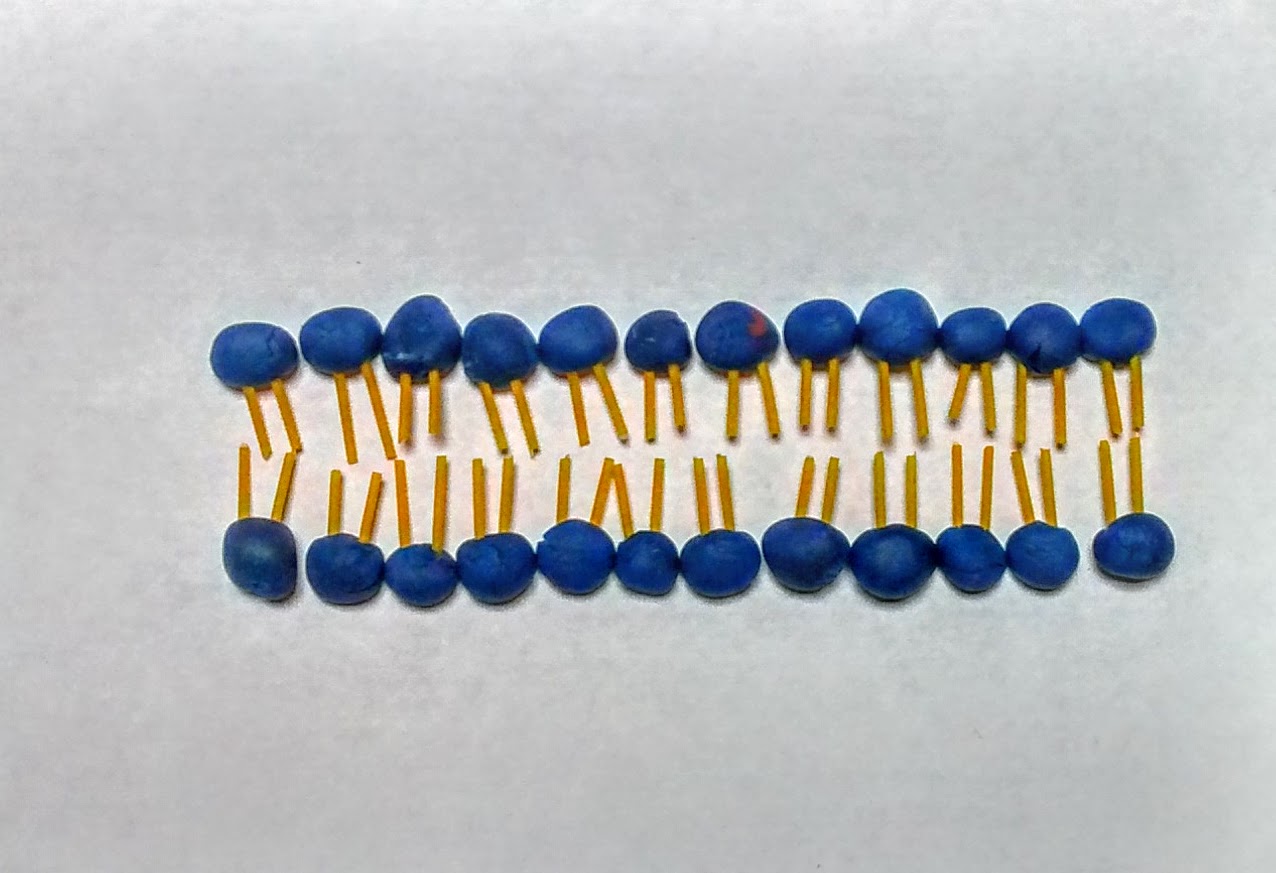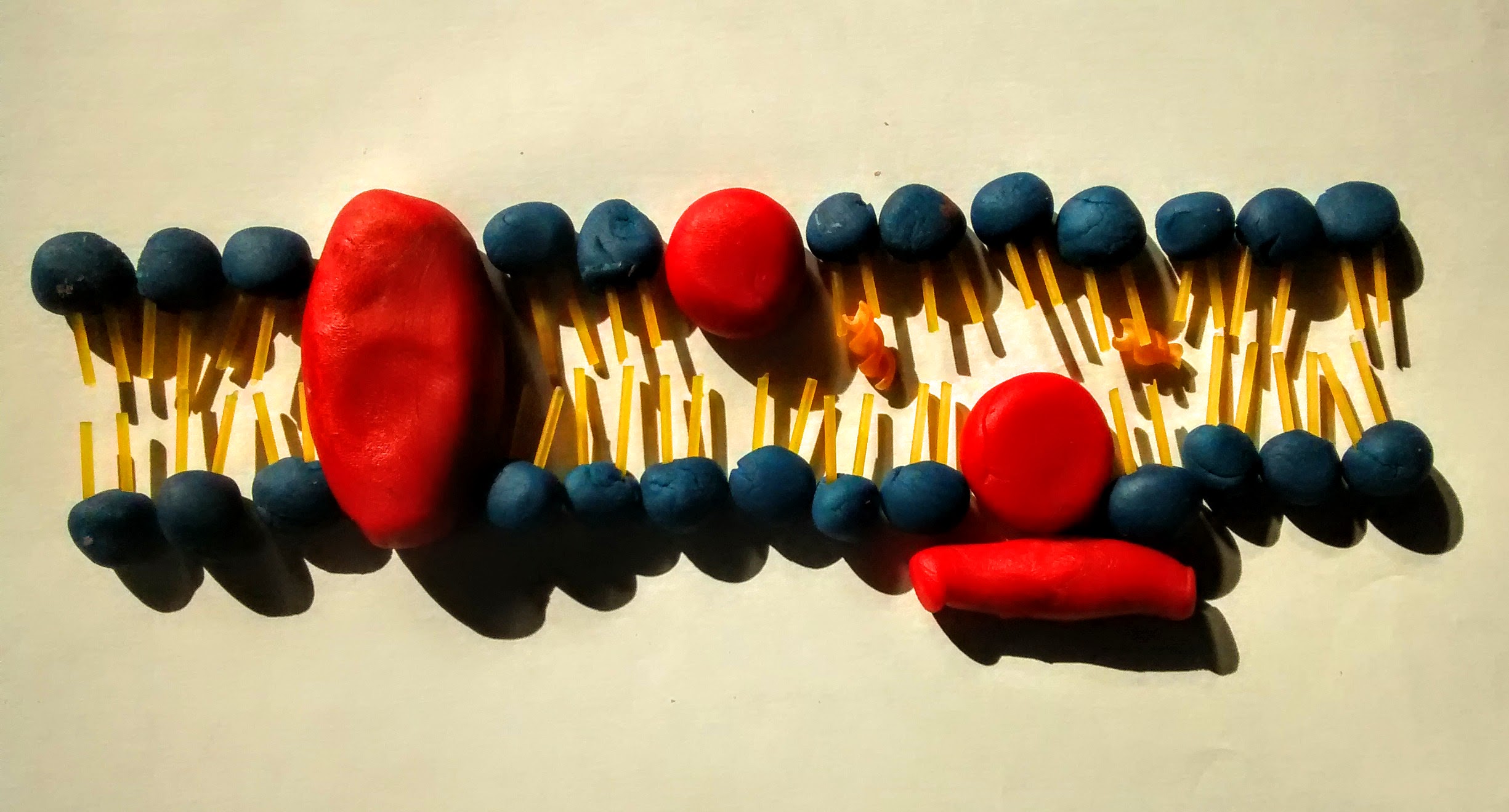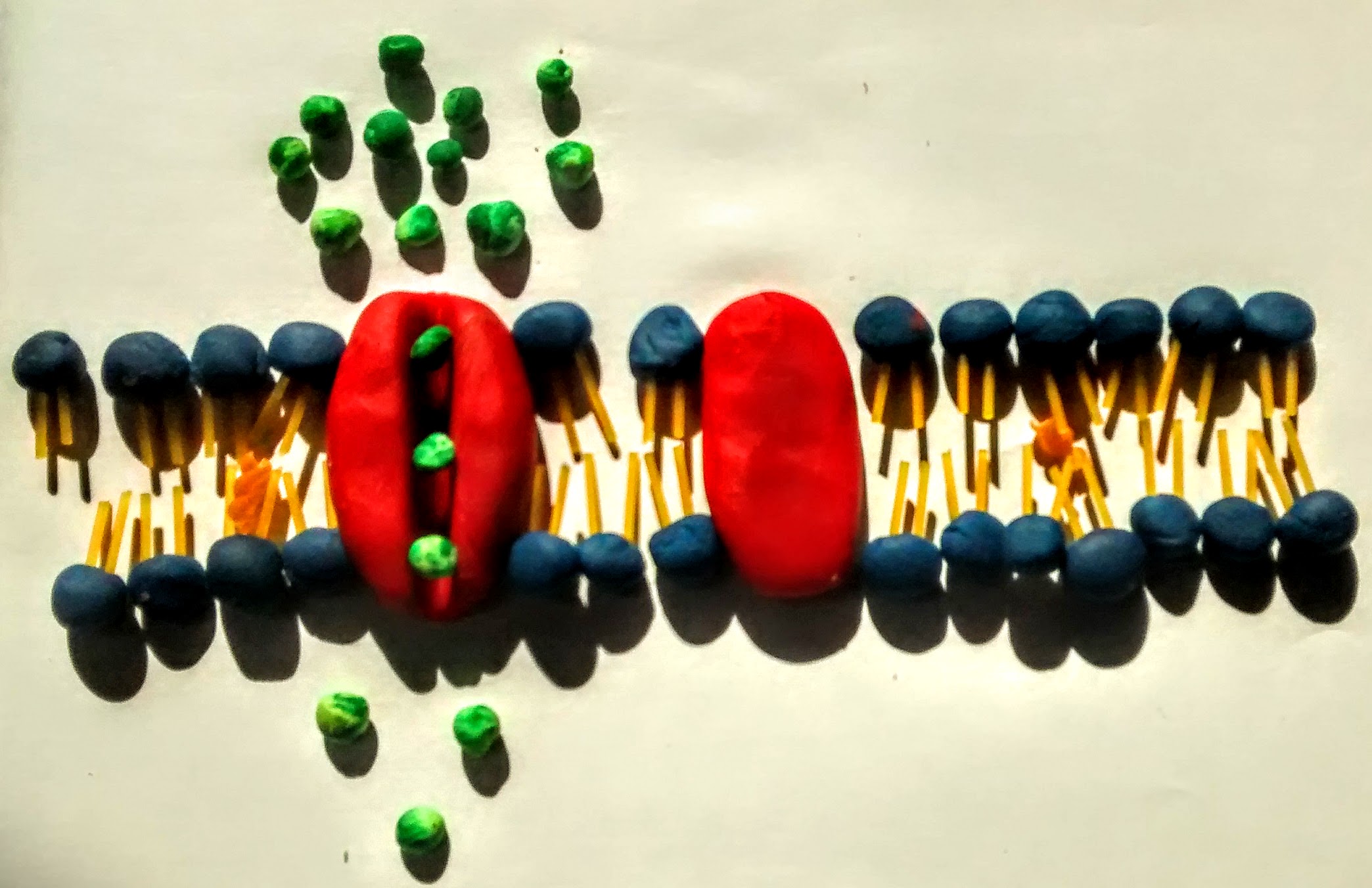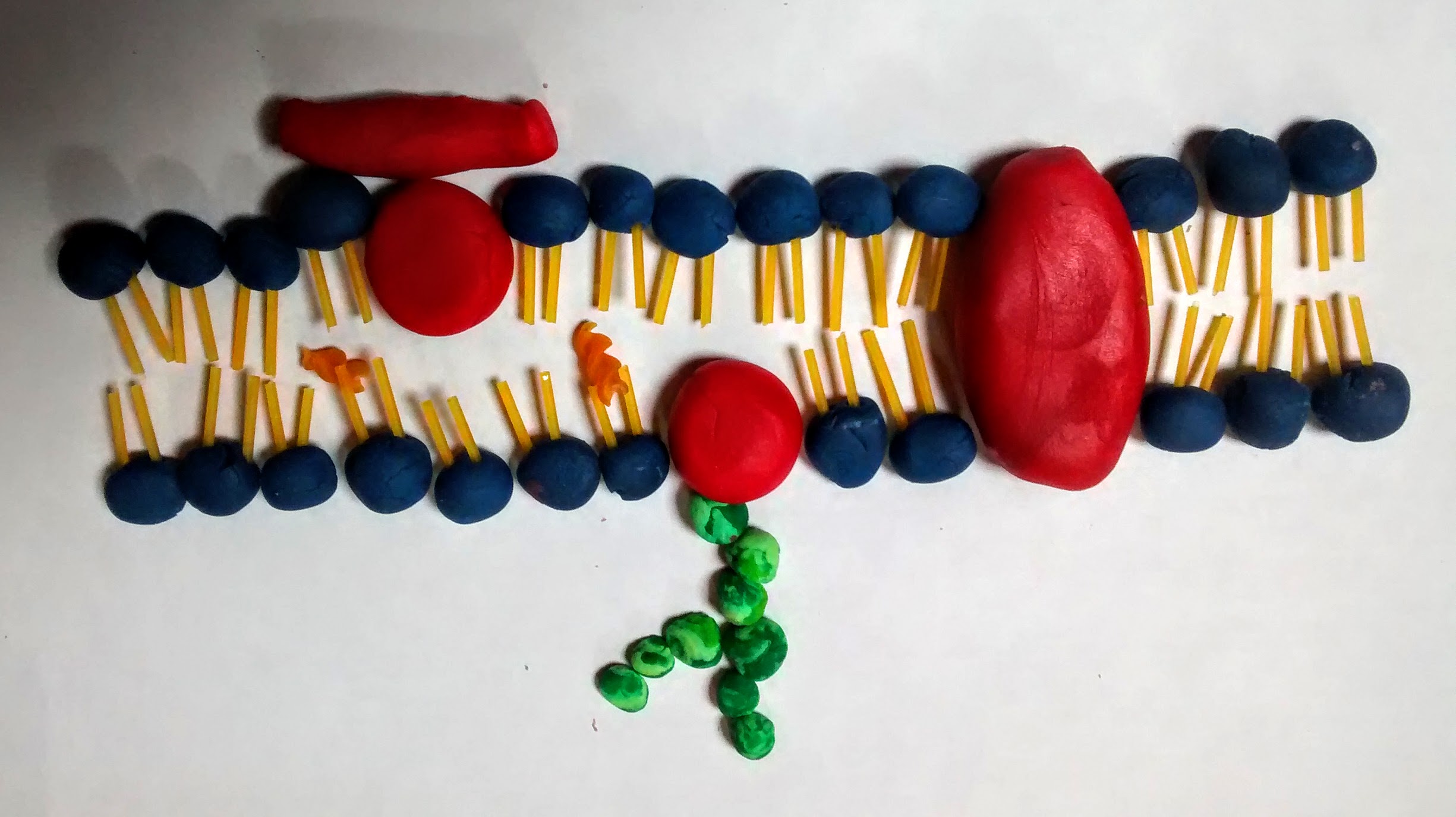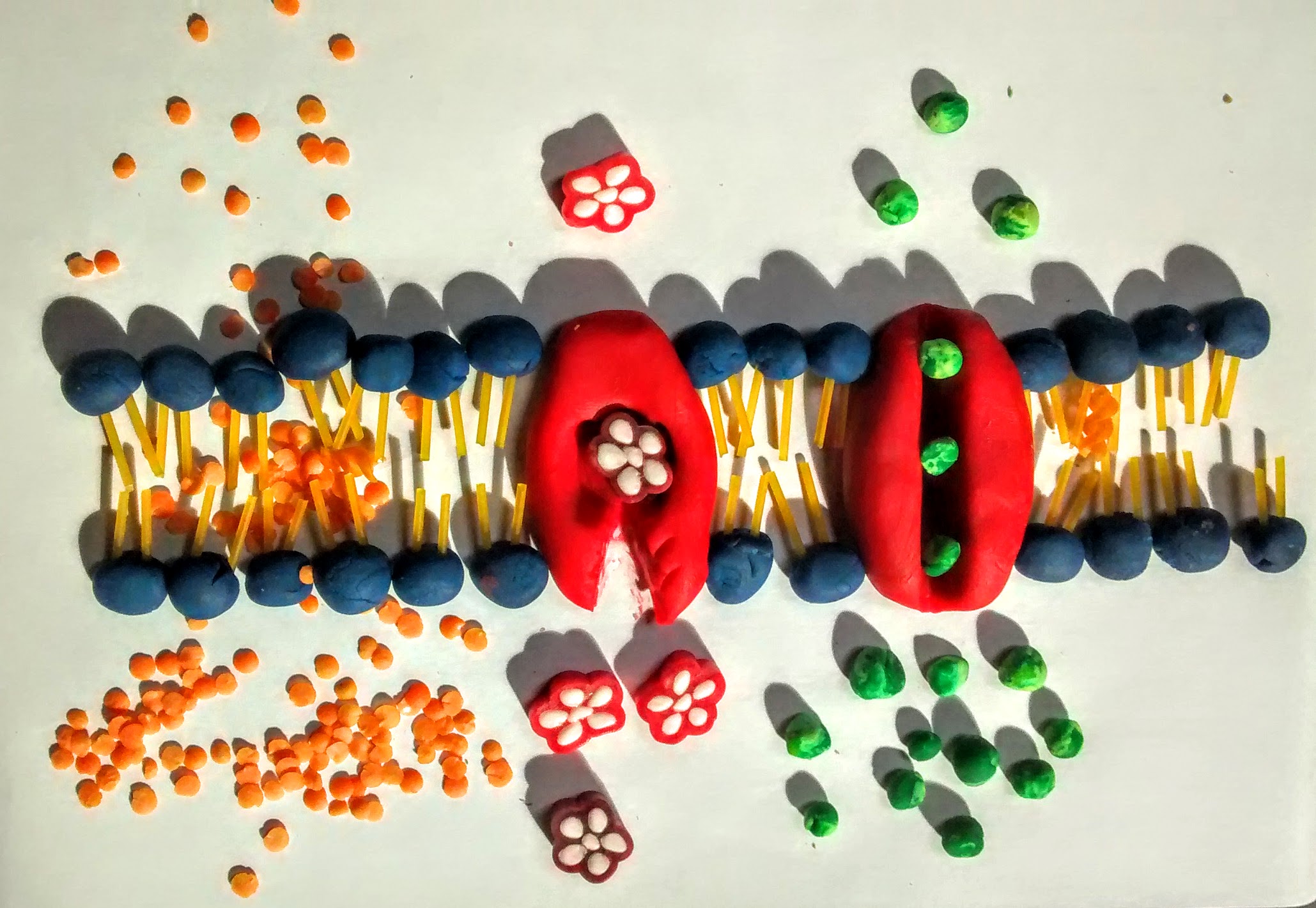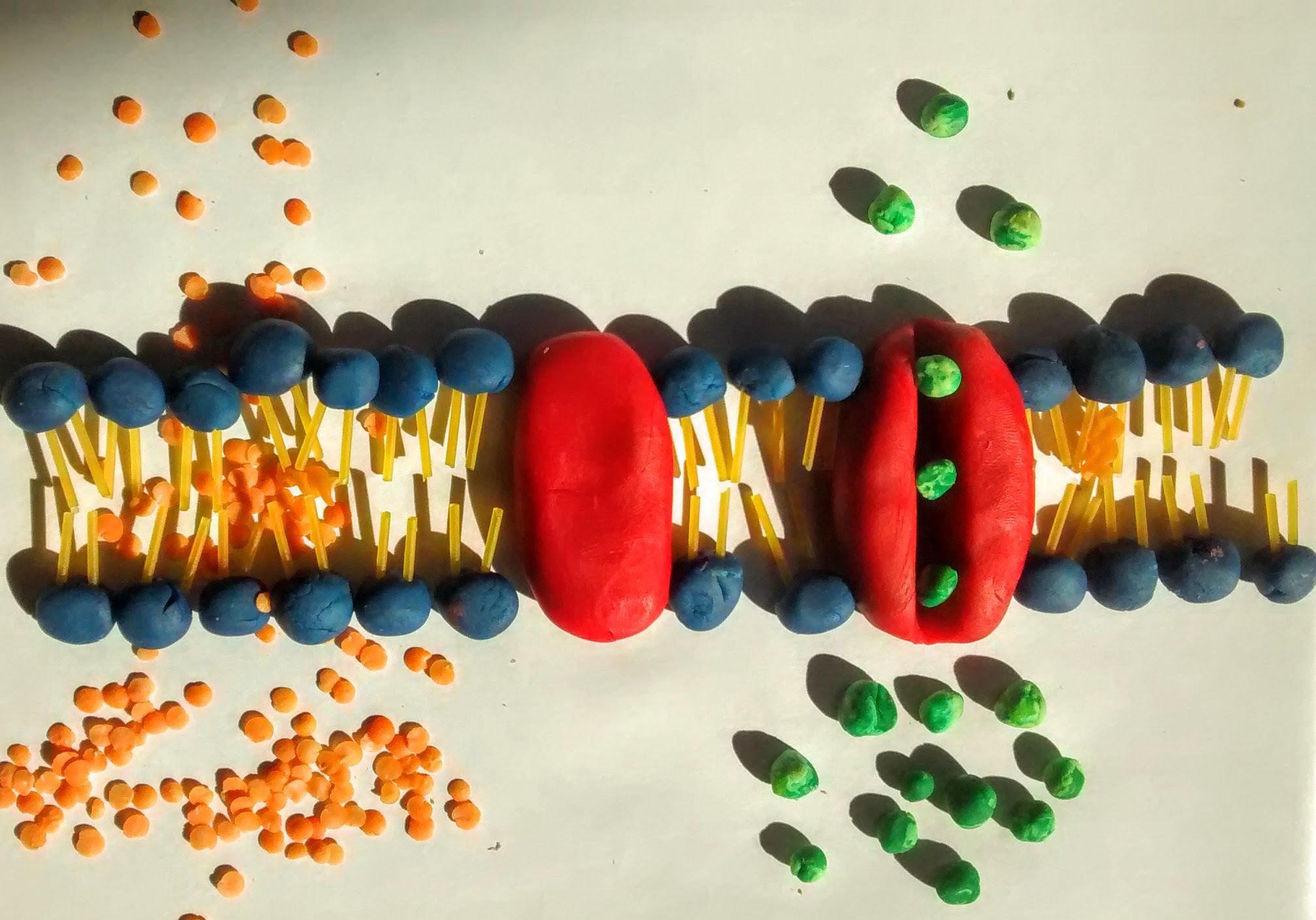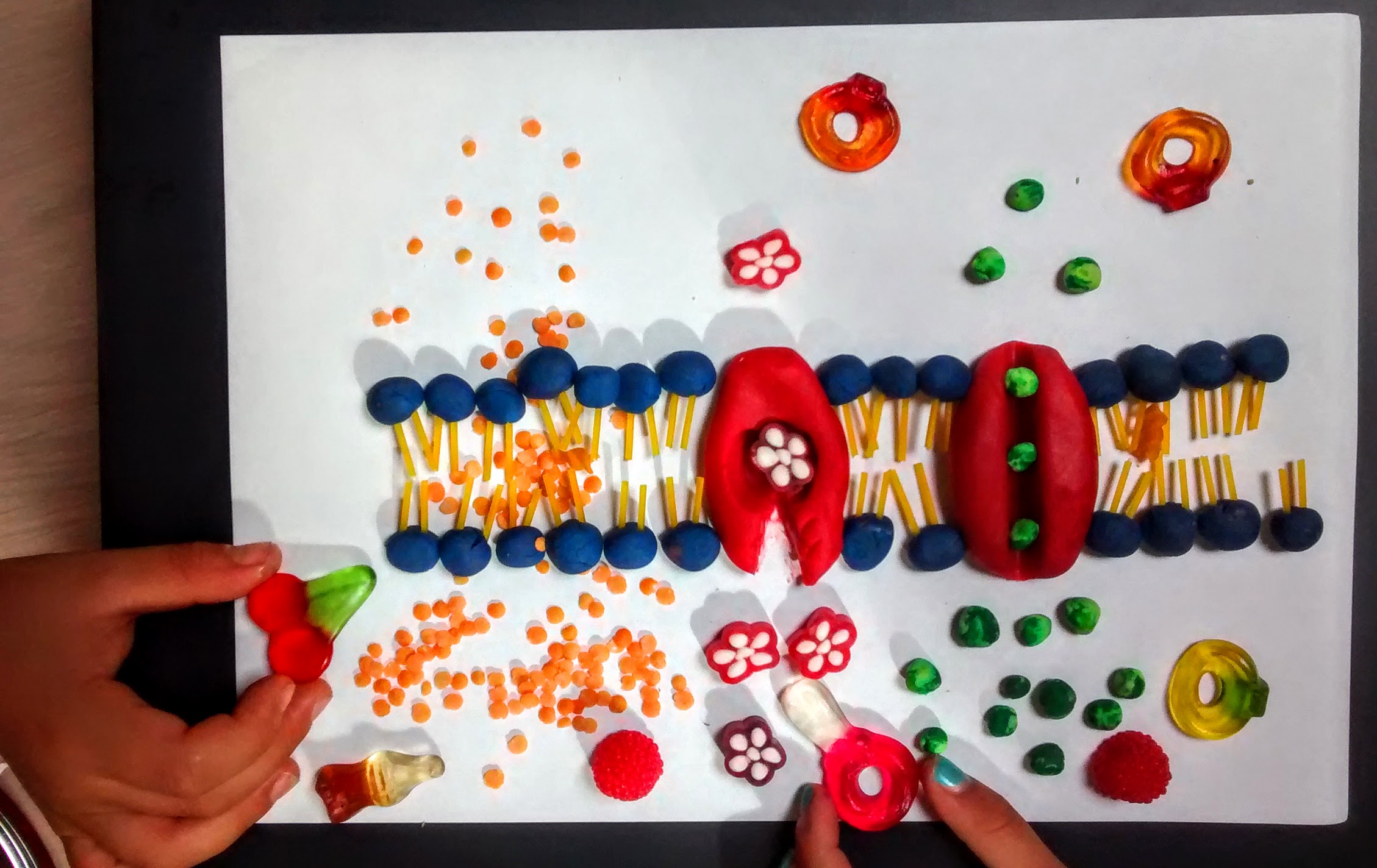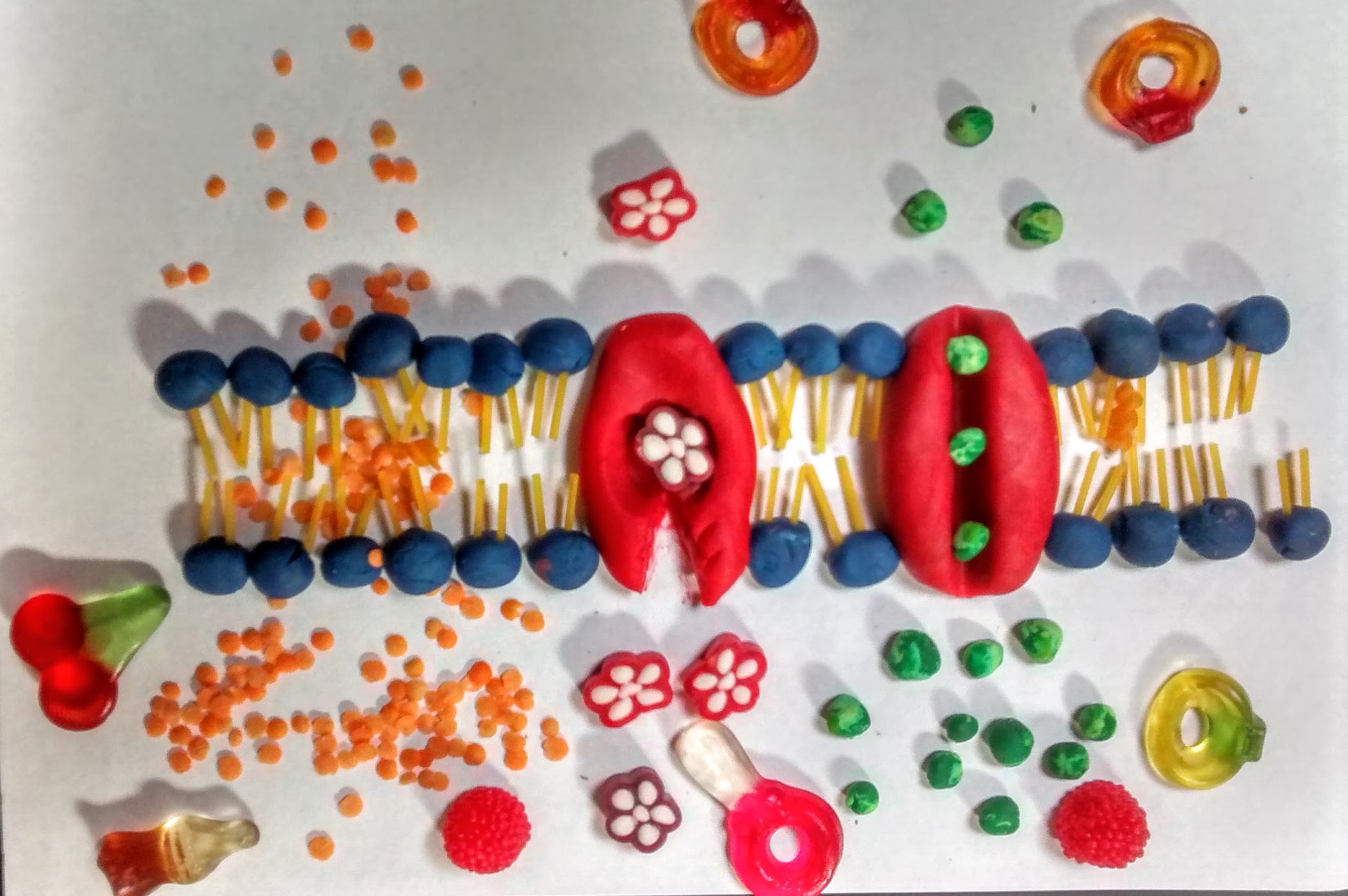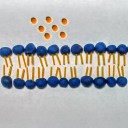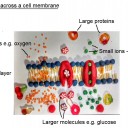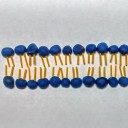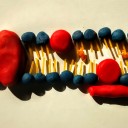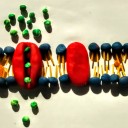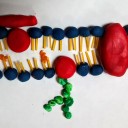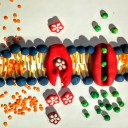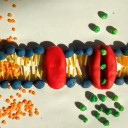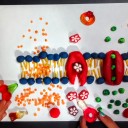Membrane transport models
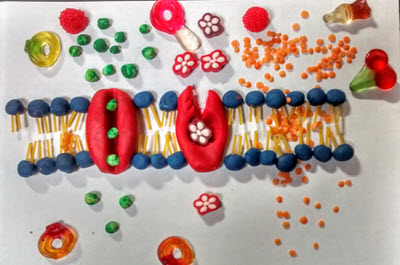 Using all that we know about molecules and about the structure of the cell membranes students are challenged to illustrate the transport of four very different molecules through the membrane using play-doh, spaghetti, food and sweets. Protein pumps, protein channels, and the phospholipid bilayer are central to the story.
Using all that we know about molecules and about the structure of the cell membranes students are challenged to illustrate the transport of four very different molecules through the membrane using play-doh, spaghetti, food and sweets. Protein pumps, protein channels, and the phospholipid bilayer are central to the story.
Lesson Description
Guiding Questions
The plasma membrane controls what enters and leaves the cell, how ?
What contribution do each of the lessons so far make in finding the answer?
- Membrane structure
- Further membrane structure
- Membrane permeability experiment
Activity 1 - Brainstorm - What do you know so far?
Brainstorm in a pair, or small group all the details of the cell membrane covered so far.
What are the parts of a cell membrane called, where are they found and what are their functions? This image might help.
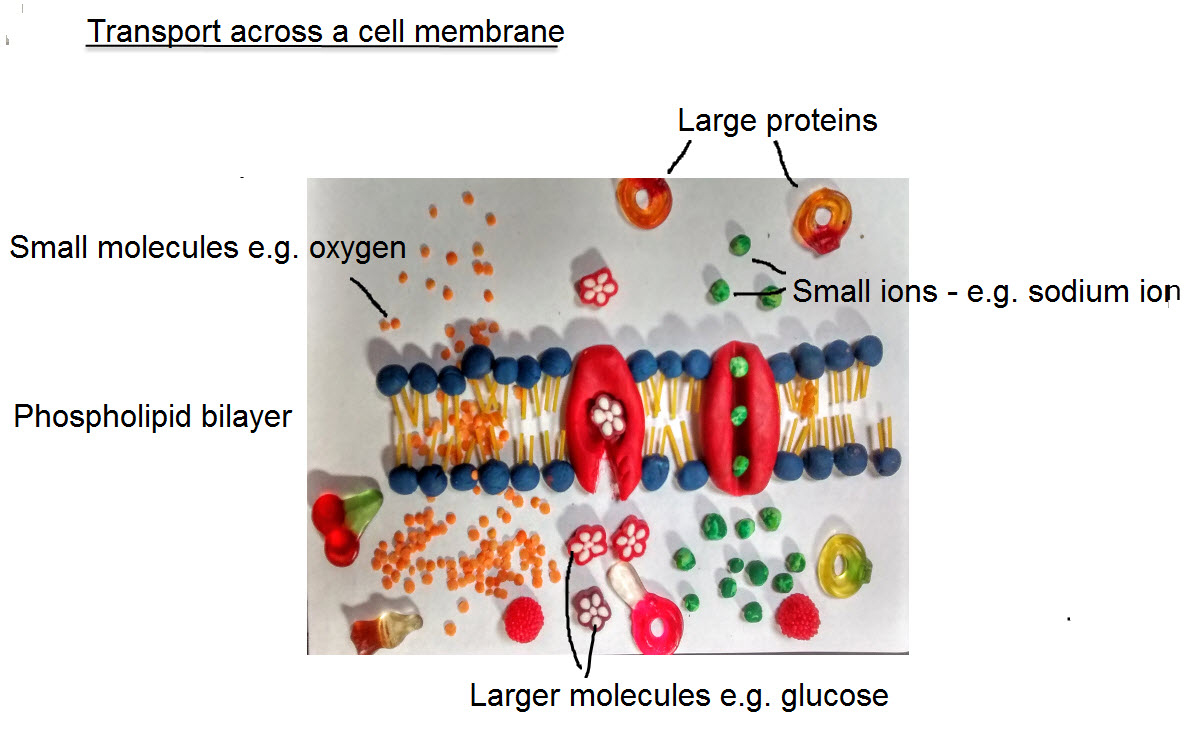
Question
From the image above identify four types of molecules which need to be transported across the membrane.
1. ..........................................
2. ..........................................
3. ..........................................
4. ..........................................
What particular problems might the cell membrane have in moving / controlling each type of molecule?
......................................................................................................................................................
......................................................................................................................................................
......................................................................................................................................................
......................................................................................................................................................
Click the eye icon for answers
From the image above identify four types of molecules which need to be transported across the membrane.
- Small non polar molecules ( eg. oxygen, carbon dioxide )
- Small ions (e.g. Sodium (Na+) Calcium (Ca2+), Potassium (K+)
- Larger molecules (e.g. glucose, nitrates )
- Very large molecules (e.g. proteins)
Particular problems:
Very small molecules can move through the phospholipid bilayer easily - it is difficult to stop them.
Polar molecules like, small ions can't get past the non-polar fatty acid tails of the phospholipid bilayer.
Larger molecules can't cross the bilayer either and sometimes need to be moved from a low concentration to a higher concentration (against the concentration gradient)
Very large protein molecules can't cross the membrane at all, even using integral proteins. For these molecules another mechanism is needed. (Endocytosis / Exocytosis)
Activity 2 - Build a model and explain the three types of membrane transport
Here is a simple example of an animated gif showing simple diffusion across a membrane. I'm sure you can do better.
Carry out the activity to build a membrane model using the ![]() membrane transport models worksheet, shown below.
membrane transport models worksheet, shown below.
Then use your model to create a stop frame animation of the three methods of transport, simple diffusion, facillitated diffusion and active transport.
Activity 3 - Gallery of membrane images - explain what they represent
Using this gallery, pause the slide show and explain what is being shown. There are clues if you hover over the image.
for a more permanent record copy some of the images and add labels to explain the three types of transport through the membrane
- Passive transport - simple diffusion
- Passive transport - facilitated diffusion
- Active transport - protein pumps & ATP
Teacher's notes
This model making is a chance to evaluate the understanding of students in the class. Just by watching students and looking at their models it's easy to find students who are struggling. There will be an opportunity to explain any misconceptions and to use the models to illustrate these explanations during the lesson, especially during activity 2.
Activity 1 - This could be a short plenary, questions and answers session, or a "think pair share" activity. Alternatively it could be individual work, revision, or homework
Activity 2 - Differentiation can be done by outcome. Activity two could take a long time if students get 'carried away'. Personally I would allow some students to do this, and encourage others to take their time with understanding the model.
Activity 3 - brings the class together for a plenary.
It gives an opportunity to use the student models to summarise the 3 transport methods,
gives an opportunity to use the student models to summarise the 3 transport methods,
It could be a good point to ask questions about how protein pumps work, someone might suggest,"by changing their shape".
Sodium - potassium pumps could be used as an example of active transport and changing shape.
There is a nice animation of sodium potassium pump function - here. Personally, I wouldn't worry too much about the details at this stage, we have to revisit them in neurone function later.
Another nice illustration
Put together all the phospholipids to make one whole cell. Put a small pile of the bigger sweets which represented proteins in the model next to the cell and ask students
"How could the cell use the fluidity of the membrane to get these large protein molecules into the cytoplasm?" If you succeed you can share the sweets!
They might remember how white blood cells engulf bacteria, or theories of the origins of eukaryotes, by endocytosis of other organisms leading to mitochondria. This could lead to a good illustration of endocytosis, and a feast on the left over sweets as a reward?
If you want to be mean, make the students get the cell to release the sweets by exocytosis before sharing them...... and no eating in the lab of course.
(Thanks to Will, for asking the question)

 IB Docs (2) Team
IB Docs (2) Team

